Hate mowing your yard – Why do it?
Lawns are the single largest irrigated crop in the US.
NASA led a study in 2005 that found there were approximately 63,000 square miles of turfgrass in the United States making it the nation’s largest irrigated crop by area. 63,000 square miles is about equal to the total land area of Virginia, Maryland and New Jersey combined.
Good thing grass is a nice, environmentally friendly crop -right? Uh — No!
Turns out that grass is a little better than raw dirt or asphalt for the environment – but not much.
What is wrong with grass – other than that you must mow it every week?
What is the problem?
Actually, mowing it is part of the problem. According to the US Department of Energy, Americans use 1.2 billion gallons of gasoline for lawn mowing each year. Mowers also consume engine oil, and two-stroke mowers consume oil in their fuel. Furthermore, the Environmental Protection Agency (EPA) estimates that people spill about 17 million gallons of gasoline each season filling lawn mowers or about 50 percent more oil than was spilled by the Exxon Valdez.
Of course, burning 1.2 billion gallons of gasoline in our lawn mowers releases tons of CO2 into the atmosphere every summer when it will do the most harm.
There is a common misconception that lawns are sequestering carbon, and thus partially offsetting the carbon we produce while mowing. However according to The Alliance for the Chesapeake Bay our lawns, especially highly treated ones, are culprits in greenhouse gas emissions, adding as much as one ton of CO2 each year per acre.
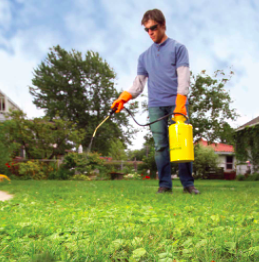 Apparently, we collectively enjoy mowing so much that we invest millions of dollars and thousands of man hours to make sure our grass grows. Across the country we apply 70 million pounds of fertilizers and 90 million pounds of pesticides annually. More than 40 billion dollars – (Yes, that is the B word) are spent on the lawn care in North American each year. This according to an entertaining, thought provoking book by Ted Steinberg American Green: The Obsessive Quest for the Perfect Lawn
Apparently, we collectively enjoy mowing so much that we invest millions of dollars and thousands of man hours to make sure our grass grows. Across the country we apply 70 million pounds of fertilizers and 90 million pounds of pesticides annually. More than 40 billion dollars – (Yes, that is the B word) are spent on the lawn care in North American each year. This according to an entertaining, thought provoking book by Ted Steinberg American Green: The Obsessive Quest for the Perfect Lawn
In and around our area of the Blue Ridge Mountains the problem of lawn fertilizers and pesticides is particularly troublesome because our creeks, streams, and rivers drain directly into the Chesapeake Bay. Loudoun, Clarke, and Frederick Counties are all in the Chesapeake Bay Watershed area.
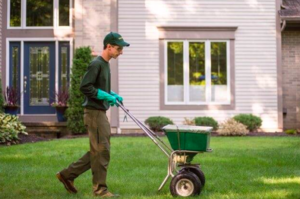
According to a July 14,2020 article by Vincent Cotrone published by Penn State Extension Service “The best estimate for how much nitrogen fertilizer is applied to lawns in the Chesapeake Bay watershed is nearly 215 million pounds per year. This is enough nitrogen to grow nearly 2 million acres of corn. About 19 million pounds of pesticide active ingredients, mostly herbicides to kill “weeds,” are used each year.”
Another problem with our lawns is that they add to storm water runoff pollution. According to an article by Ryan Davis, Chesapeake Forests Program Manager for the Alliance for the Chesapeake Bay the typical lawn in our area “ can only infiltrate one inch of rainwater per hour (compared to a forest, which can infiltrate 16 inches). This means that when we get over an inch of rain, your lawn will be a source of stormwater runoff. That water will pick up pollutants not just from your yard (including animal waste), but also from the street, carrying them into your local stream. Stormwater travels fast, and with high volumes, may erode streambanks rapidly.
Are there Solutions?
OK – So our lawns add significantly to air pollution problems – particularly in the summer; cost us a great deal of money; pollute our streams, rivers and the Chesapeake Bay and often become a dreaded task on a hot Saturday afternoon. What is the alternative short of paving over the acres of turf that we have worked so hard to cultivate?
How about meadows, wildflowers, and trees?
Certainly, green grass is now and will remain for the foreseeable future the default ground cover for the typical ½ acre lot in suburban Loudoun, Fairfax, and surrounding counties.
However, in Western Loudoun and the areas close to the Blue Ridge many lots are significantly larger than ½ acre and offer real opportunities to convert portions of lawns to meadows and tree cover.
According to the Alliance for the Chesapeake Bay, in Loudoun and surrounding counties there are three realistic and environmentally friendly alternatives to a lawn: conservation landscaping, forest cover, and meadow cover.
The concept of Conservation landscaping is the practice of modifying the plant, ground cover, and flora around a home or business in a way that incorporates environmentally sensitive design, low impact development, non-invasive native plants, and/or integrated pest management. Practices like rain gardens, beds of native grasses and wildflowers, and planting
Conservation landscaping is an excellent option for homeowners with small properties and/or restrictive Homeowners Associations.
Another approach to converting lawn cover to a native ecosystem is by simply planting trees. Maintenance in the form of mowing between the trees will be necessary for a few years, but eventually the canopy will close and provide sufficient shade and leaf litter to kill the turfgrass and begin to rebuild forest soil.
Several states including Pennsylvania, Minnesota, New Hampshire, and Massachusetts are aggressively pursuing the environmental benefits of alternatives to lawns and exploring ways to encourage/help landowners find alternatives to the traditional lawn.
Pennsylvania has perhaps the most aggressive program. It has launched a campaign to convert 10,000 acres of mowed grass into meadows or forests in parts of the state that are in the Chesapeake drainage by 2025. There are an estimated 1 million acres of lawn in Pennsylvania’s portion of the Susquehanna River watershed alone. The goal is to convert half of the 10,000 acres into meadows and half into forests.
The Alliance for the Chesapeake Bay has partnered with the Pennsylvania Department of Conservation and Natural Resources (DCNR) to do about 20 turf-conversion demonstration projects for free on 60 acres in four southcentral Pennsylvania counties targeted for stepped-up pollution reductions in the state’s cleanup plan. The $400,000 project is being financed with a grant from the National Fish and Wildlife Foundation and others, with matching funds from the Alliance and DCNR.
In one pilot project, in Franklin County, several school campuses, totaling 20 acres, will have their neat lawns planted in trees. Guidelines call for 200 trees per acre and that no mowing can be done five to 10 years later. At a church in Lancaster County, the surrounding lawn will be dug up and turned into a meadow with native grasses that will attract pollinators and add to the area’s biodiversity. Smaller lawns of about 1 acre each will get a makeover around home sites in the four targeted counties of Lancaster, York, Franklin, and Adams.
To qualify, properties must be mowed lawns — not pastures or old fields — and cannot have more than 30% of grounds already in trees.
Assistance in Virginia
Virginia does not currently have a program comparable to the Pennsylvania’s direct financial assistance to encourage landowners to convert mowed grass to meadows. However, there are some sources of assistance. 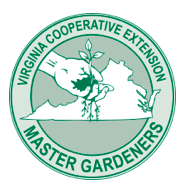
The Master Gardeners program of the Virginia Cooperative Extension Service has a program to help landowners reduce the amount of fertilizer and pesticide they use.
Healthy Virginia Lawns (HVL) volunteers visit your property, complete a site analysis of your yard, measure the area of turfgrass and collect a representative soil sample. The sample is mailed to Virginia Tech where it is tested and a comprehensive analysis produced.
The HVL team interprets this report and provides a detailed Nutrient Management Plan for your lawn which is sent via email. The plan clearly states the nutrient applications your lawn does, and does not, need and includes a detailed schedule on when to apply recommended nutrients for best results. By following your customized plan, you save time and money buying and applying only the applications your turfgrass needs while helping to build a healthier Chesapeake Bay watershed.
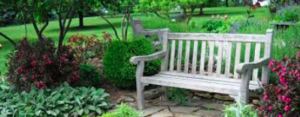 The Loudoun Soil and Water conservation District (LSWCD) has a tree planting program to help fund the cost of planting streamside vegetative buffers on non-agricultural land. Owners of non-agricultural land within Loudoun County are eligible. Sites with riparian (streamside) planting areas are given priority. This includes private land, commercial/industrial properties, or Homeowners Association property.
The Loudoun Soil and Water conservation District (LSWCD) has a tree planting program to help fund the cost of planting streamside vegetative buffers on non-agricultural land. Owners of non-agricultural land within Loudoun County are eligible. Sites with riparian (streamside) planting areas are given priority. This includes private land, commercial/industrial properties, or Homeowners Association property.
A total of $70,000 (up to $7,000 per acre for the cost of labor and materials for new plantings) is available.
Landowners will be reimbursed after planting, following the submission of receipts and a copy of the recorded Declaration of Restrictions to preserve the planting area and a site inspection by LSWCD or County staff. A follow-up site inspection will occur at one year to evaluate the planting success criteria (75% survival with uniform distribution). Additional planting may be required to achieve the success criteria.
For more information contact:
Chris Van Vlack – chris.vanvlack@lswcd.org
Loudoun Soil and Water Conservation District
30 Catoctin Circle, SE Suite H
Leesburg, VA 20175
571-918-4530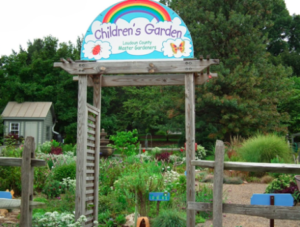
The Virginia Department of Conservation and Recreation (DCR) provides information and technical assistance to encourage individuals and companies installing solar panels to plant meadows as opposed to turf grass around the panels. According to DCR’s web site: Native meadow plantings under and around panel areas reduce the costs of mowing and maintaining non-native grasses. Further, panel efficiency is significantly enhanced by the cooling effects of diverse meadow habitat compared to non-native grass monocultures.
Native plant meadows are much better than turf grass at capturing atmospheric carbon and returning it to the soil, thus reducing a solar operation’s carbon footprint. Native plants effective
ly minimize soil and water runoff. Providing pollinator habitat also greatly benefits surrounding agriculture by enhancing pollinator populations.
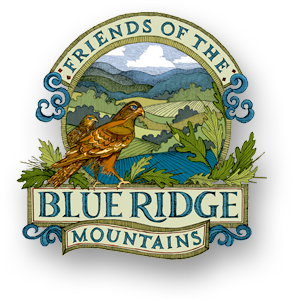
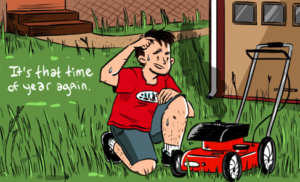

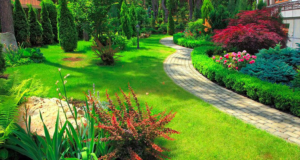
Leave a Reply
Your email is safe with us.